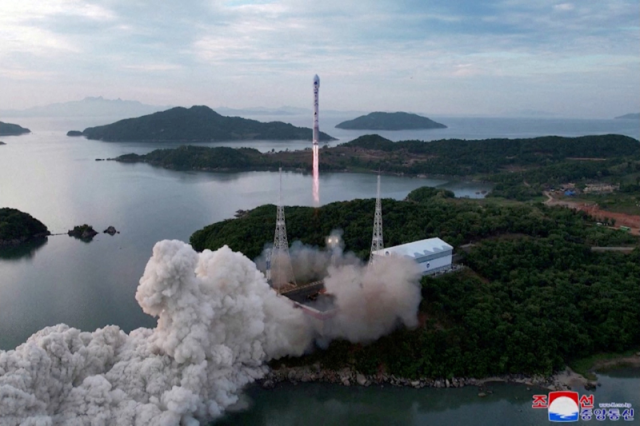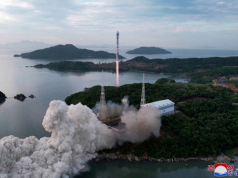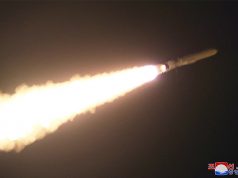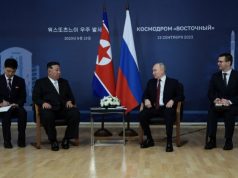
SEOUL — North Korea appears to be preparing for its third attempt this year at launching a reconnaissance satellite, a move that may prove as controversial as the nuclear-armed country’s weapons tests.
Earlier attempts on May 31 – North Korea‘s first such launch since 2016 – and Aug. 24 ended in fiery failures when its new Chollima-1 rockets crashed into the sea.
North Korea has notified Japan it plans to launch a satellite between Wednesday and Dec. 1, prompting criticism from Japan and South Korea who say it would violate a U.N. ban on Pyongyang’s missile development.
Here’s what we know about North Korea‘s race for space, and why it’s so controversial:
Space ambitions
Since 1998 North Korea has launched six satellites, two of which appeared to have successfully reached orbit, and the last of which was in 2016.
International observers said that satellite seemed to be under control, but there is lingering debate over whether it had sent any transmissions.
Experts said that North Korea had used a three-stage rocket booster such as the Unha-3 of previous launches, but that a new launch pad was clearly built for a larger rocket.
A senior official at North Korea‘s space agency said after the launch that it planned to put more advanced satellites into orbit by 2020 and eventually “plant the flag of (North Korea) on the moon”.
During a party congress in January 2021, leader Kim Jong Un revealed a wish list that included developing military reconnaissance satellites.
The Chollima-1 seems to be a new design and most likely uses the dual-nozzle liquid-fuelled engines developed for Pyongyang’s Hwasong-15 ICBM, analysts said.
South Korea has recovered some of the Chollima-1 wreckage – including, for the first time, parts of a satellite – but has not released detailed findings. Seoul has said the satellite had little military value.
In September Kim toured Russia’s most modern space launch centre, where President Vladimir Putin promised to help Pyongyang build satellites.
South Korean officials have said the upcoming launch could incorporate unspecified technical assistance from Russia.
Dual-use technology
The United States and its allies called North Korea‘s latest tests of satellite systems clear violations of United Nations Security Council resolutions, which prohibit any development of technology applicable to North Korea‘s ballistic missile programs.
North Korea has said its space program and defense activities are its sovereign right.
At the time of the 2016 space launch, North Korea had yet to fire an intercontinental ballistic missile (ICBM). The satellite launch was condemned by governments in the United States and South Korea as a disguised test of missile technology capable of striking the continental United States.
Since 2016, North Korea has developed and launched three types of ICBMs, and now appears committed to placing working satellites in space. That would not only provide it with better intelligence on its enemies, but prove it could keep up with other growing space powers in the region, analysts said.
North Korea could use such satellites to more effectively target South Korea and Japan or conduct damage assessments during a war, said Ankit Panda of the U.S.-based Carnegie Endowment for International Peace.
On the other hand, if North Korea can verify, with its own satellites, that the United States and its allies are not about to attack, it might reduce tensions and provide stability, he added.
– Reporting by Josh Smith. Editing by Gerry Doyle









